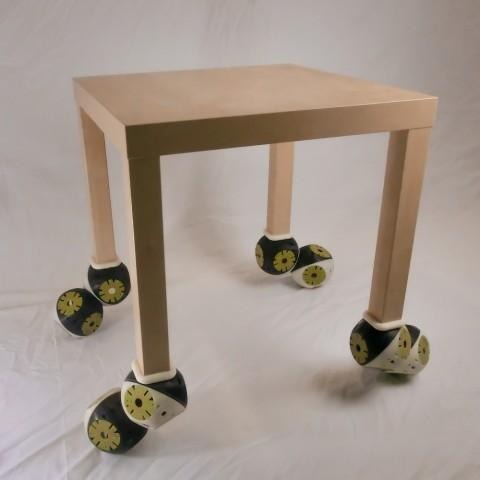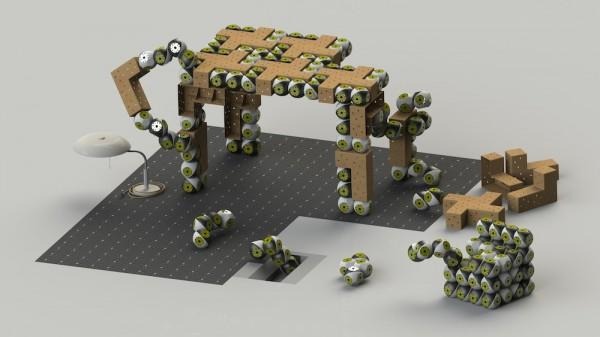Roombots Modular Robo-Furniture Is Transformers For Tables
Robotic transforming furniture that can evolve to suit different rooms, functions, and individuals could be the future of home decor, if one Swiss team has its way, designing modular self-organizing 'bots for tomorrow's lounge. Dubbed Roombots, each unit is just short of nine inches long and consists of two blocks joined by three motors, which can twist and reassemble to make different designs.
Inside each block there's a battery and a wireless connection, which the Roombots use to collaborate. Retractable hooks or "claws" can be deployed to fix different Roombots together.

However, the team envisages the initial applications as being hybrids of traditional and robotic furniture, reducing cost and complexity. Rather than the entire object being made of robots, only certain parts would be.
A special adapter plate into which the "claws" can grip has been designed for floors, walls, and other objects, so that the Roombots can lock on and adapt them.
A coffee table could lift up for more comfortable use with a laptop, for instance, or to bring itself within easier reach of someone with limited arm movement. "It could be very useful for disabled individuals to be able to ask objects to come closer to them," Auke Ijspeert, head of the École Polytechnique Fédérale de Lausanne team responsible for the project, said, "or to move them out of the way."
There are some limits to the current functionality, however. Biggest is battery life, with the current prototypes only good for an hour's autonomy. There's also the issue of balancing motor strength with the weight of supporting people and objects.

Another question is one of programming, with the flexibility of the Roombots potentially making them tricky to control for regular users. Several preset styles that could be selected and arranged on a tablet or smartphone might address that, though some of the inherent potential might arguably be lost along the way.
Nonetheless, the Biorobotics Laboratory (BIOROB) team is confident that such issues can be worked out, whether that be by using inductive charging or some other method. The end goal is a home or office around which the Roombots could scurry, either across the floor or the walls, creating mobile surfaces that can follow people as they move.
It's not the first time we've seen self-assembling robots designed. Last year, an MIT project came up with M-Blocks, using magnets to link together and a high-speed internal flywheel for movement. Meanwhile, one Harvard team has suggested that NASA pave the way to human exploration of nearby planets by sending out swarms of collaborating robot termites that could autonomously build structures and shelters in advance of astronauts arriving.
VIA LiveScience
SOURCE EPFL
